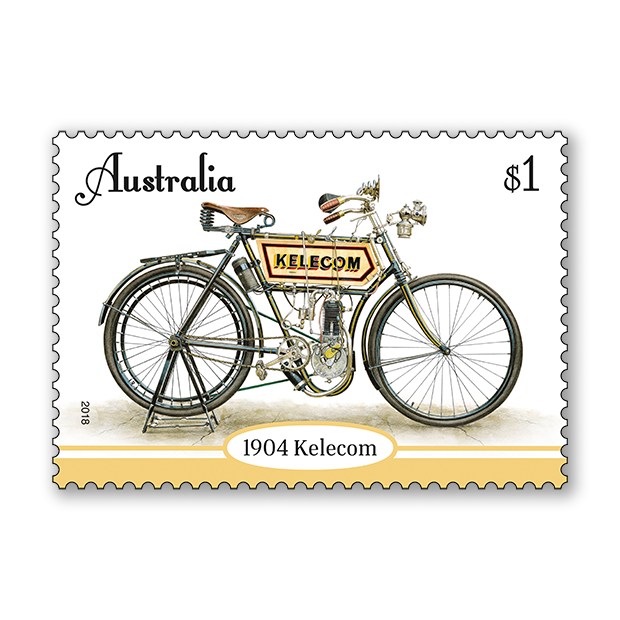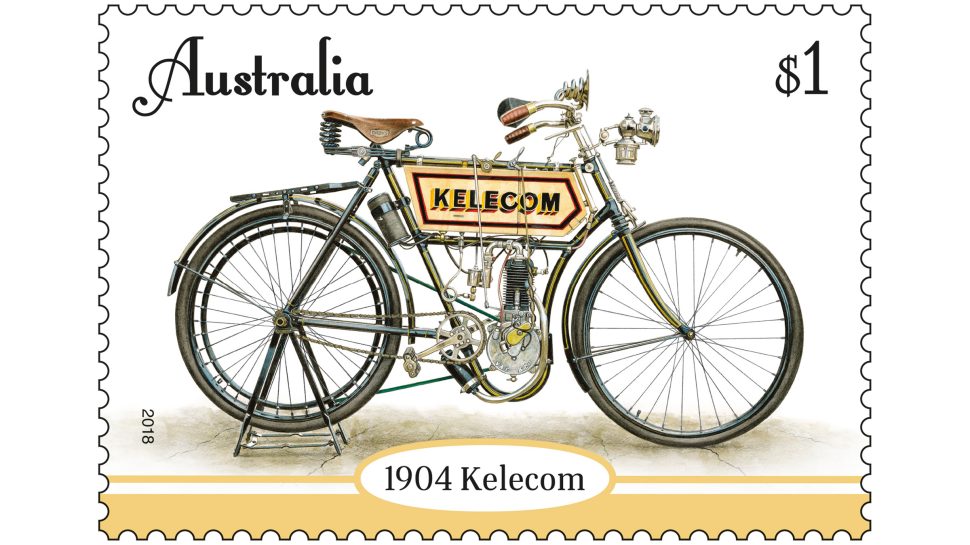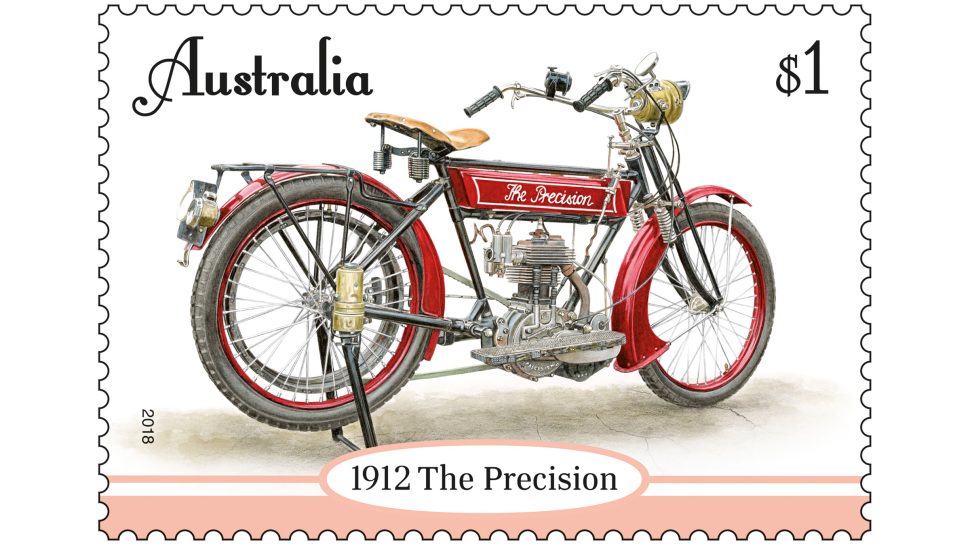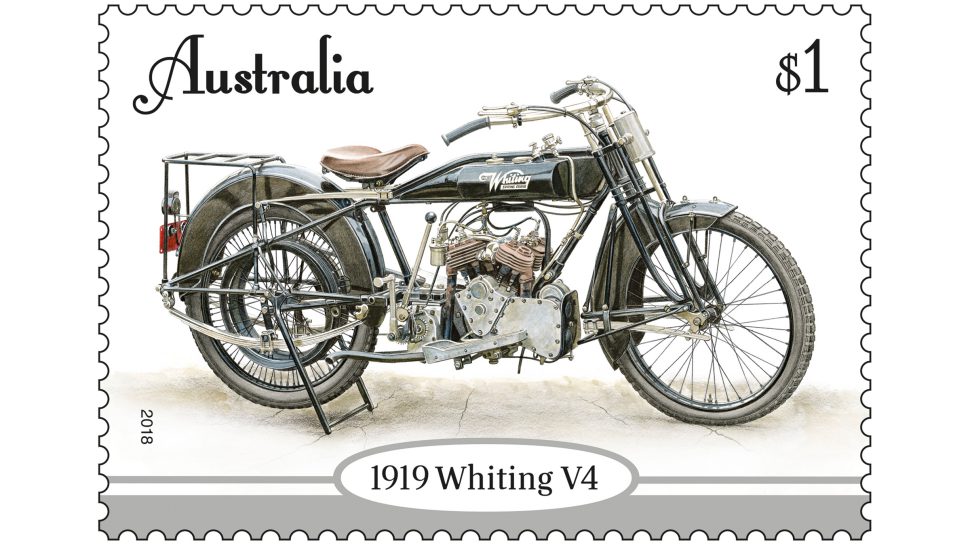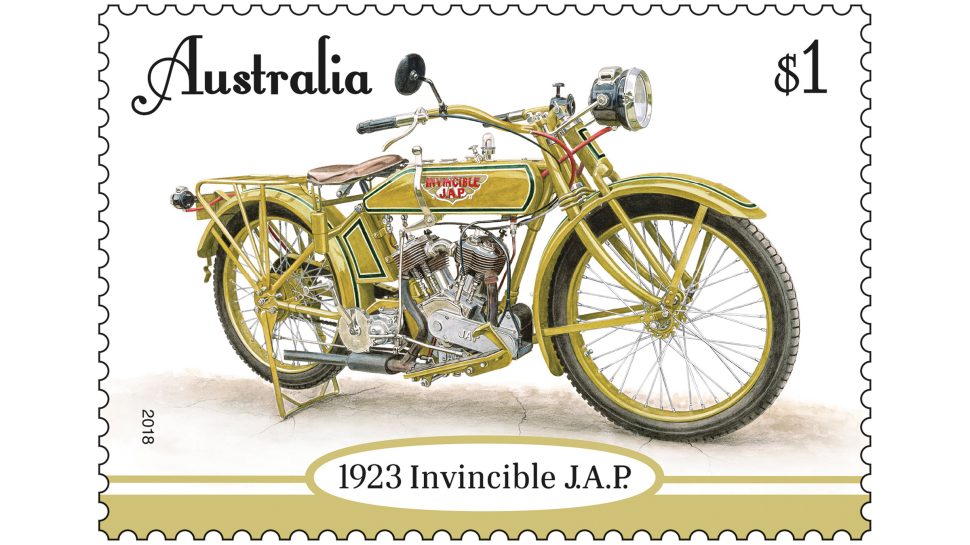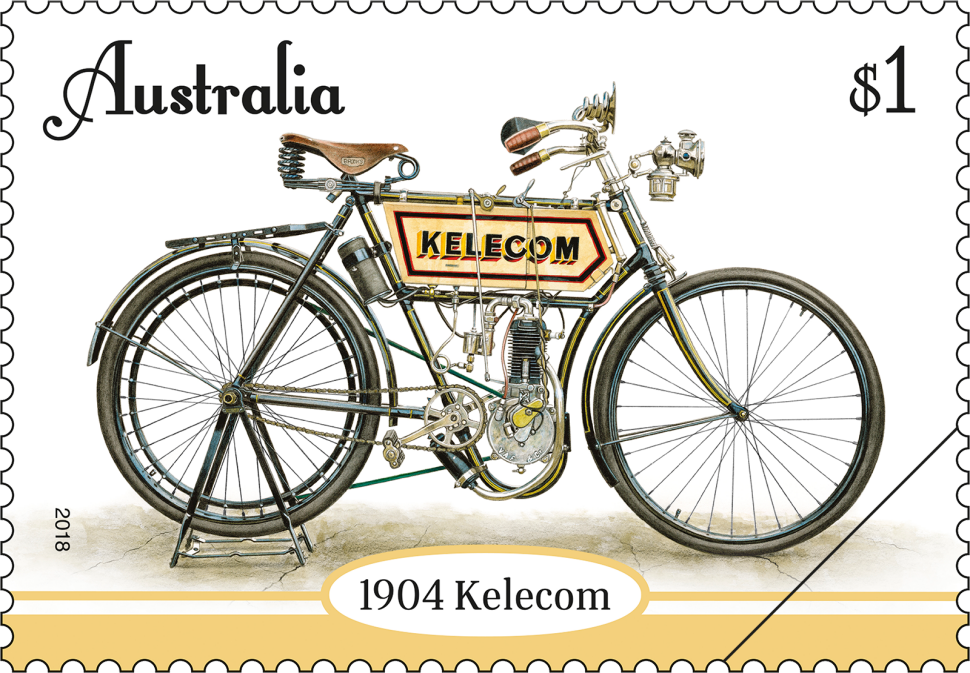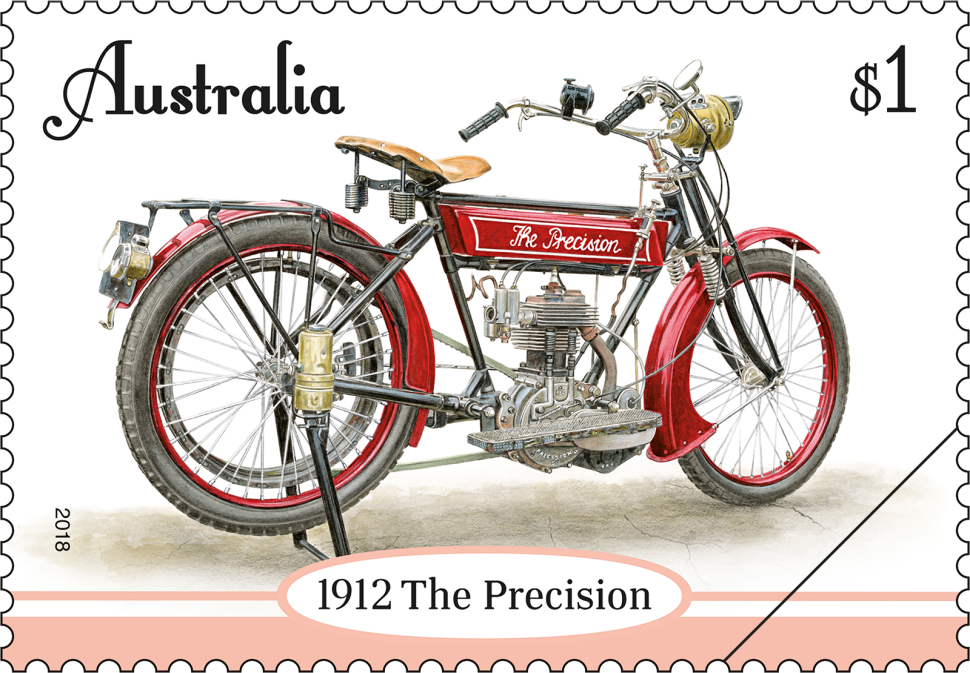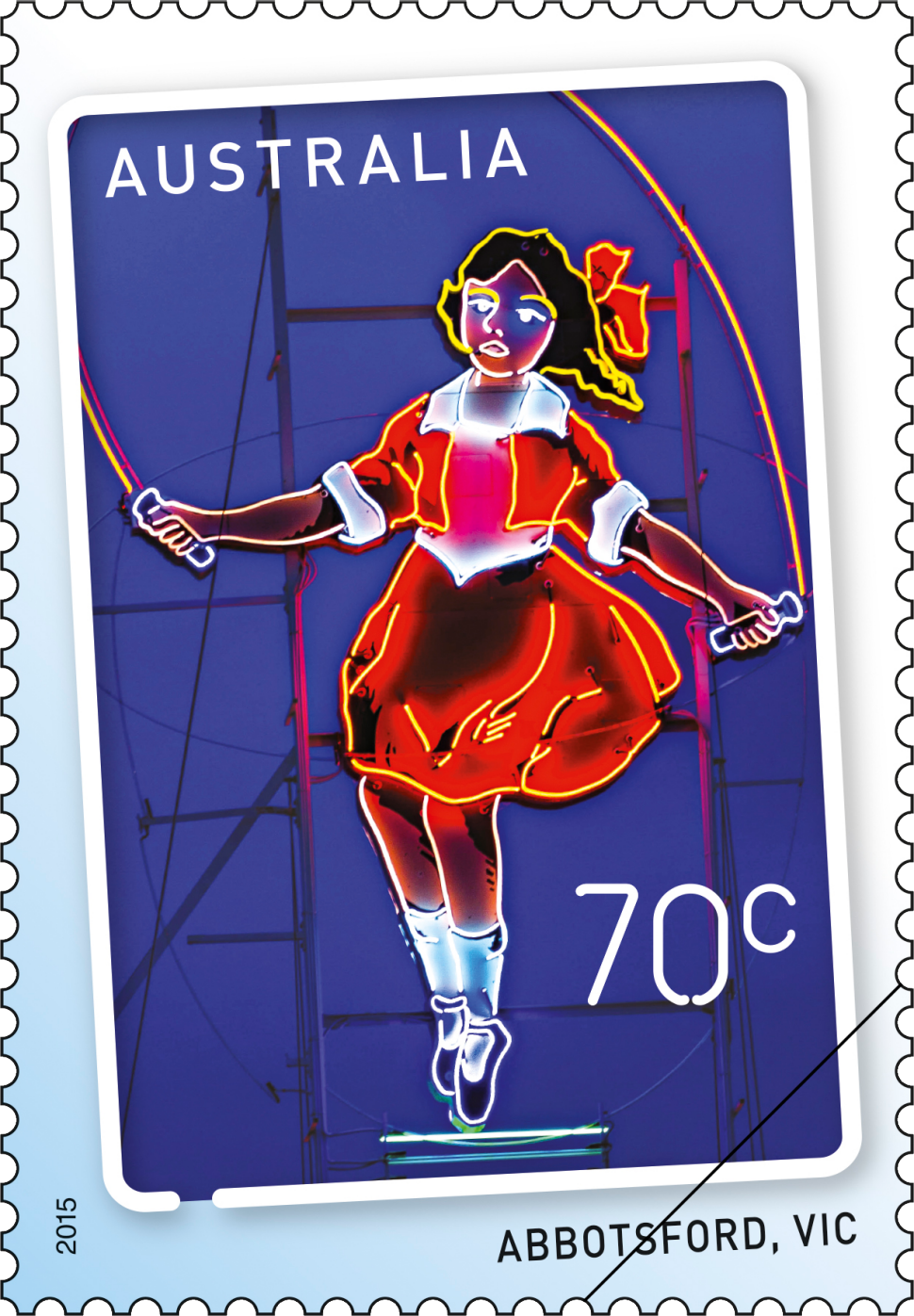In the early 20th century motorcycling was a highly popular mode of transport in Australia. Numerous marques, based mainly in Melbourne and Adelaide, catered for our enthusiasm for motorcycling. However very few cycles were made completely in this country; most brands were assembled from imported components, including engines, frame lugs and gears.
This stamp issue features four motorcycles that were constructed or conceived in Australia prior to World War II.
The stamps have been illustrated by English-born Mike Harbar, a world-renowned illustrator of vehicles.
Products released in this issue
- First day cover (blank, gummed, self-adhesive)
- Stamp pack
- Maxicards
- Booklets of 10 x $1 (self-adhesive)
- Rolls of 100 (self-adhesive)
- Booklet collection
- Prestige booklet
Technical specifications
- Issue date
- 4 September 2018
- Issue withdrawal date
- 30 March 2019
- Denominations
- 4 x $1
- Stamp design
- Mark Harbar
- Product design
- Sharon Rodziewicz
- Printer - gummed
- EGO
- Paper - gummed
- Tullis Russell
- Printer - self-adhesive
- Multi-color
- Paper - self-adhesive
- Securepost C-print
- Paper - rolls
- Raf Unik
- Printing process - gummed
- Offset lithography
- Printing process - roll
- Flexography
- Stamp size
- 37.5mm x 26mm
- Perforations
- 13.86 x 14.6
- Sheet layout
- Module of 50
- FDI postmark
- Ryde NSW 2112
- FDI withdrawal date
- 3 October 2018
James Hill & Sons of 63 Grenfell Street, Adelaide, assembled cycles using Kelecom engines from 1902 to 1904, most of which were sold with the Kelecom name on the tank. The engine was named after Belgian engineer, Paul Kelecom. The 1902 machines used 1¾ or 2¼ hp engines in a BSA bicycle frame set, with the engine mounted on the seat tube. In mid-1903, the engine was mounted in the now conventional position in front of the pedal bracket, with choice of 1¾, 2 ¼, 2 ¾ or 3¼ hp engines. The motorcycle on the stamp dates from 1904.
Precision engines were manufactured in Birmingham, United Kingdom and exported all over the world. Several Australian firms used Precision engines in their motorcycles, including AG Healing of 354 Little Bourke Street in Melbourne and Adelaide companies Lewis & Bullock and James Hill & Sons. The range of Precision engines included the 2¼ hp two-stroke up to 8 hp V-twin, in frames of their own construction. Most cycles were equipped with the 4¼ hp “Big Four” single-cylinder engine which was widely marketed from 1912 as the Precision Big Four motorcycle. The example on the stamp was originally assembled with a 500cc air-cooled side-valve “Big Four” single-cylinder Precision engine in 1912.
The Whiting V4 motorcycle was conceived in Melbourne in 1912 when engineer Saville Whiting designed and built an innovative spring-frame cycle with semi-elliptic leaf sprinting on both the front and rear wheels. In 1914 Whiting took his design to England, where he became a partner in a London engineering firm, intending to market his design. In London, Whiting designed an air-cooled V4 engine for the motorcycle. The prototype was built and installed in the original frame and bought back to Australia in 1920. Whiting planned to manufacture his motorcycle at a factory in Richmond, Victoria, but unfortunately this did not eventuate. The cycle on the stamp is a significant piece of Australian motorcycling history, as it’s the original motorcycle built by Whiting in London and brought back to Australia in 1920.
The Invincible J.A.P. is perhaps the best known of pre-World War II Australian-constructed motorcycles. Constructed mainly of British parts, the Invincible J.A.P was built in Melbourne for Turner Bros of Swanston Street by Firth Bros., Richmond. Firth Bros started constructing the Invincible J.A.P. in 1922 when, after losing its Harley Davidson agency, it needed a large motorcycle to compete with American models. For the next five or six years the Invincible J.A.P. sold all over the country to a strongly patriotic marketing campaign that included “It’s all British, built in Australia by Australians!” The Invincible J.A.P. was constructed from a J.A.P. (J.A. Prestwich Industries) engine, a Burman gearbox, Messenger No. 1 saddle, Australian Excelsior/Henderson copy forks and Edwards Brothers saddle tanks. The cycle on the stamp is a standard 6hp 770cc Invincible J.A.P. dating from 1923.
This content was produced at the time of the stamp issue release date and will not be updated.

